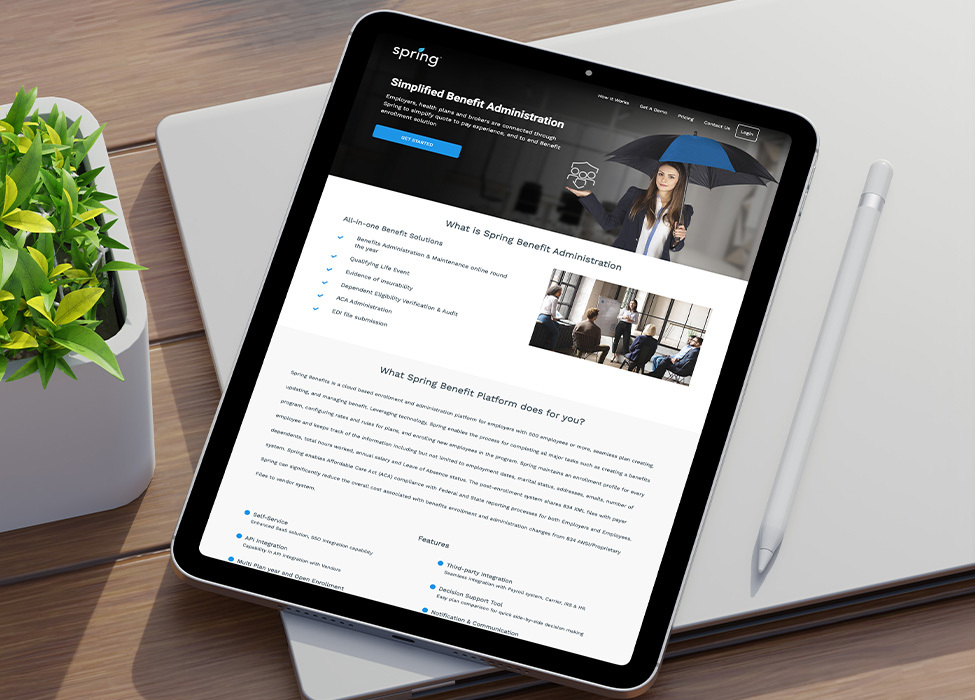Employee Benefits Enrollment Doesn’t Need to Be Complicated


Employee benefits enrollment can often be a daunting and confusing process for both employees and employers. With a multitude of options, complex jargon, and various deadlines to meet, it's understandable why many individuals find enrollment overwhelming. However, it need not be this way. By implementing a few simple strategies and adopting user-friendly tools, employers can streamline the benefits enrollment process, making it more straightforward and accessible for everyone involved.
How You Can Simplify Employee Benefits Enrollment
- Clear Communication:
Effective communication is the key to simplifying the benefits enrollment process. Employers should provide comprehensive and easy-to-understand information about the available benefits and the enrollment process itself. This can be done through brochures, online resources, and informational sessions. By clearly explaining the purpose, advantages, and costs associated with each benefit, employees can make informed decisions that align with their needs.

- Use Smart Technology:
Leveraging technology can significantly simplify benefits enrollment. Employers can utilize online platforms or benefits administration systems that allow employees to review and select their benefits electronically. These systems can provide an intuitive interface, guiding employees through the enrollment process step by step. By eliminating paperwork and automating the process, technology reduces errors, saves time, and enhances the overall experience.
- Personalized Assistance:
While technology can streamline enrollment, some employees may still require personalized assistance. Providing access to benefits counselors or human resources representatives who can answer questions and guide employees through the enrollment process can be invaluable. These individuals can provide one-on-one support, address specific concerns, and ensure that employees understand the available options.
- Deadline Reminders:
Setting clear and timely deadlines is crucial for benefits enrollment. Therefore, employers should provide employees with reminders well in advance of the enrollment deadline to avoid last-minute rushes or missed opportunities. These reminders can be communicated through various channels, such as email, internal messaging systems, or company newsletters, ensuring that employees are aware of the enrollment period and can plan accordingly.

- Information and Training:
Investing in employee education and training can significantly simplify benefits enrollment. Conducting workshops or webinars that explain the basics of various benefits, their value, and how to make informed choices can empower employees. By providing educational resources throughout the year, employers can ensure that employees have the knowledge necessary to evaluate their benefits options and make informed decisions during the enrollment period.
- Simplify Options:
Another way to streamline enrollment is by simplifying the available benefits options. While offering comprehensive benefits is essential, too many choices can overwhelm employees. Employers should carefully evaluate the benefits they offer, consider the needs of their workforce, and eliminate any redundant or underutilized options. By providing a curated selection of benefits, employees can focus on what matters most to them, making the decision-making process easier.
Experience Optimized Employee Benefits Administration
Employee benefits enrollment doesn't have to be complicated. By employing clear communication, utilizing smart technologies, providing personalized assistance, offering deadline reminders, investing in training, and simplifying options, employers can greatly simplify the enrollment process. Exela’s Spring simplifies benefit administration.

Spring Benefits is a cloud-based enrollment and administration platform for employers. It facilitates seamless plan creation, updating, and management of benefits. By harnessing the power of technology, Spring enables users to efficiently accomplish essential tasks like establishing a benefits program, setting up rates and rules for plans, and enrolling new employees into the program. The platform can quickly and efficiently maintain enrollment profiles for each employee, storing information such as employment dates, marital status,and a lot more.
Companies can empower employees to make informed decisions that align with their needs and ultimately enhance their overall satisfaction with their benefits package. A streamlined benefits enrollment process leads to happier employees, increased engagement, and a more efficient workplace for everyone involved.




